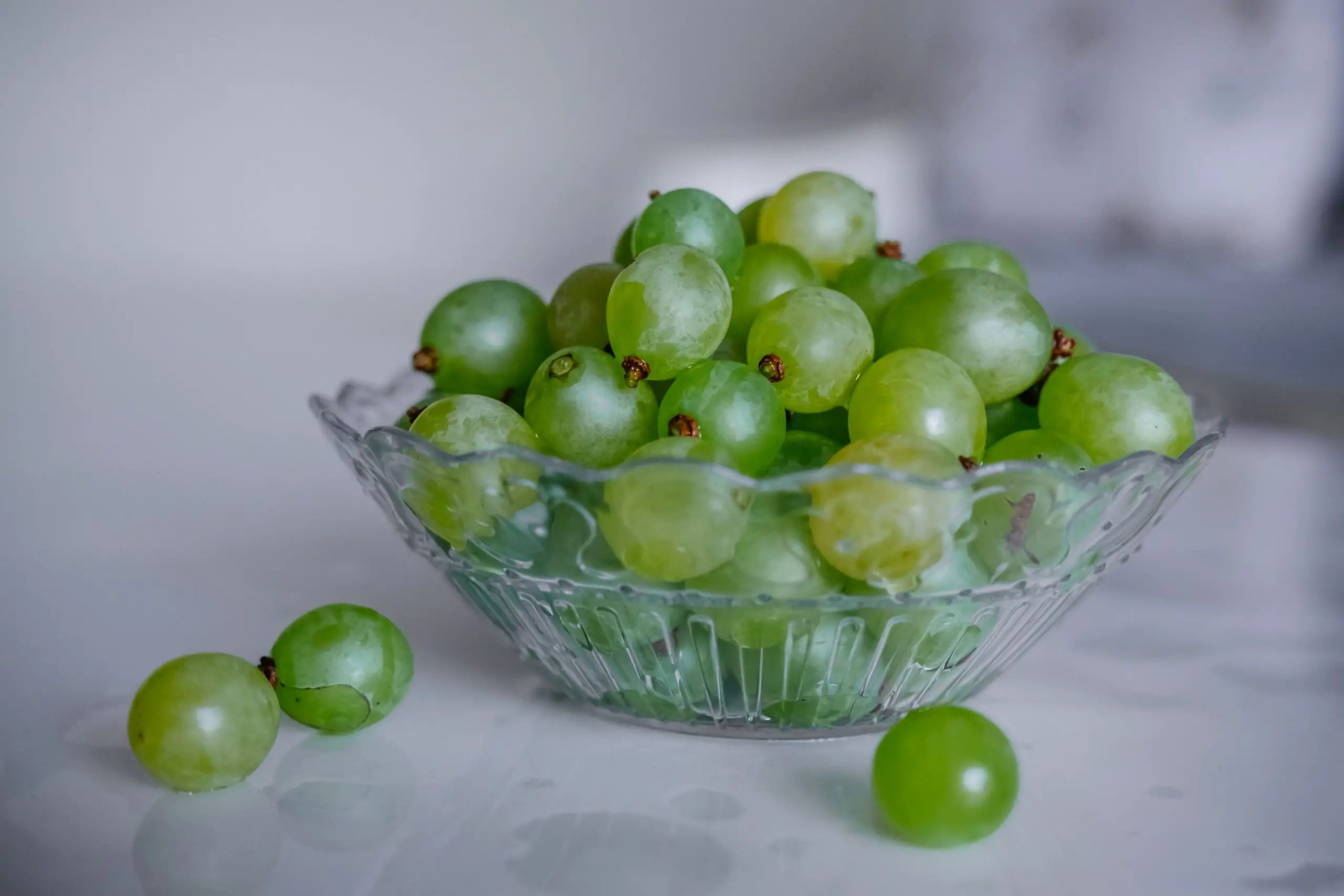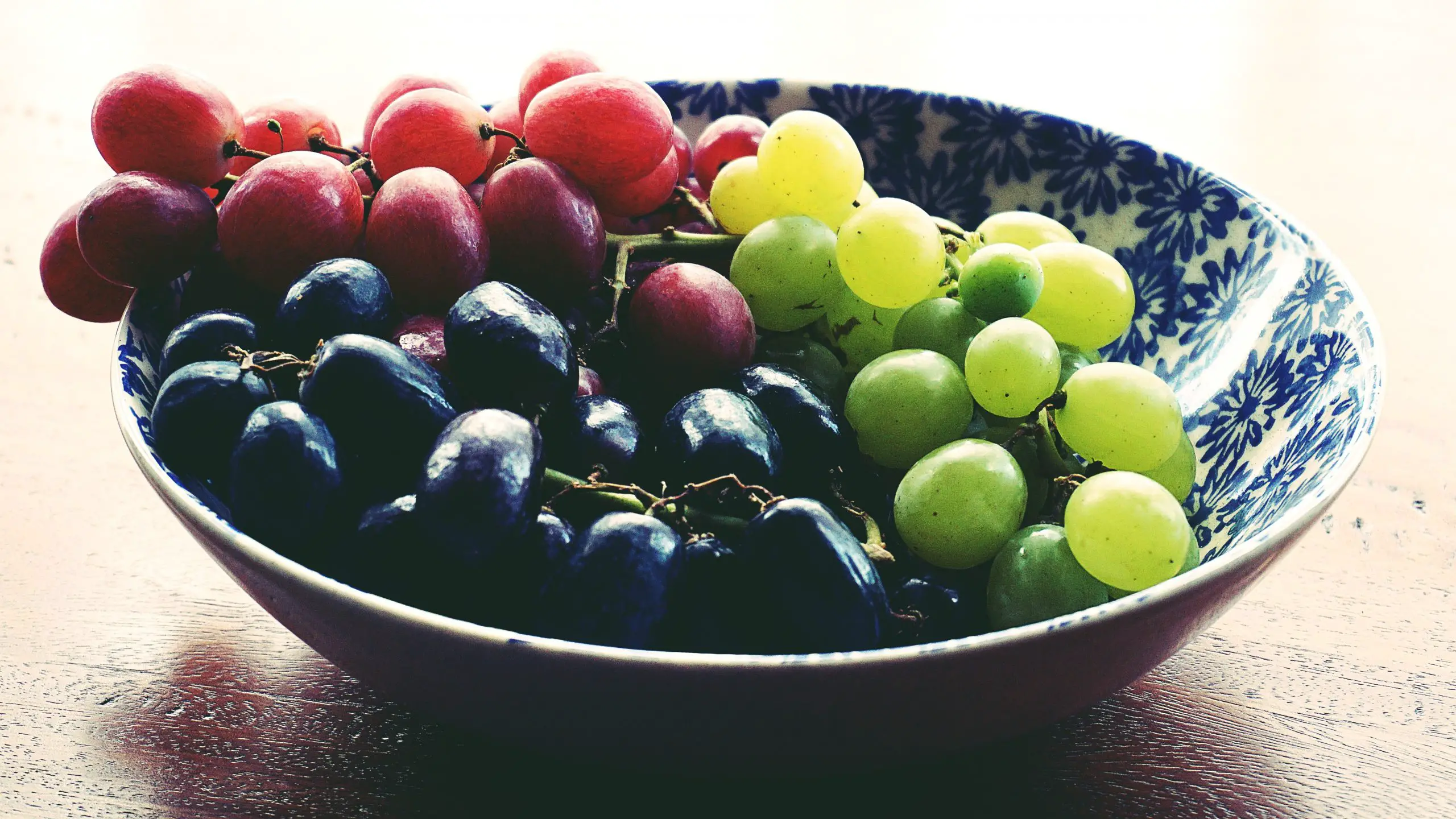You can expect to enjoy grapes for months after learning how to freeze them. And, happily, learning how to freeze grapes is as simple as you think. And the good news is that you’ll have a plentiful supply! So, what are you holding out for? Begin freezing your favourite grapes right away!

Freezing grapes is one way to save money, and they are excellent for using surplus grapes when creating smoothies or a fruit salad. Grapes can also be frozen and used in jams, jellies, and syrups. The options are limitless, and you don’t need to add sugar! If you like fruits and are looking for ways to preserve them, this article is for you.
How to Freeze Grapes?
Grapes are real berries that grow in bunches on grapevines and belong to the Genus Vitis of the Vitaceae family. The essential components of these little, oval fruits that have been produced globally for thousands of years are skin, flesh, and seeds. Seedless grapes are among the most popular varieties; they grow on grapevines that naturally produce fruit without seeds or with little, underdeveloped seeds.
Grapes are high in potassium, vitamin C, and vitamin K and can be used to make wine, raisins, grape juice, and smoothies.
Freezing grapes is simple if you follow a few basic steps:
- Thoroughly wash and dry your grapes. Wash your grapes to eliminate any dirt or pesticide residue. If pesticides are a concern, consider buying organic grapes at the grocery store. Place the fruit in a colander or salad spinner in your kitchen sink and rinse under the spray setting of your faucet. Allow the extra water to drain before blotting your grapes with a dry paper towel.
- Line a baking sheet with dry grapes. Line a baking sheet with wax paper or parchment paper. Set the grapes on the baking tray in a single layer, cover them with plastic wrap, and place them in the freezer.
- Place the grape tray in the freezer for three hours. A few hours should suffice for the grapes to solidify. The overall time of the freezing procedure may be significantly longer depending on the grape variety.
- Put the frozen grapes in a plastic bag. After removing the grapes from the baking tray, could you place them in a plastic freezer bag? Before putting the bag back in the freezer, seal it tightly and mark the date.
- Freeze your grapes for up to a year. Keep your grapes in the freezer for up to a year from the date on the label to ensure optimal freshness. Frozen grapes can be eaten straight from the freezer or included in a delicious meal.
How Long Can You Freeze Grapes?
Fresh Grapes Last at Least a Week
You can freeze fresh grapes for several weeks if you plan to use them within that time. Grapes are great to eat within a week if they are frozen. Grapes can be frozen in various forms: on a baking sheet or in a Tupperware container if they have been dried well or in a plastic bag in the refrigerator. Grapes are best served fresh or frozen.
Generally speaking, grapes will last about two to three weeks in the refrigerator, but they will keep for about five to ten days if you freeze them. This depends on the quality of the grapes. The freshest grapes will keep for a long time, while those sitting in the produce aisle for three to four days will only last a few days. Grapes are easy to identify as far as freshness is concerned.
How to Store Grapes Safely?
The easiest way to store grapes is to keep them unwashed in the refrigerator and dry in a place where they are not squeezed or tightly packed. Check for adequate airflow and the absence of any odorous meals.
Use these quick storage tips to get the most out of your grapes:
Choosing the Best Bunch of Grapes
As with all fruits and vegetables, the key to a long storage period is choosing the best ones available and excellent storage procedures.
Choose grapes with green, bendable stems and plump fruits. Green stems hold the grapes nicely and indicate freshness. When your grapes are old, the stems turn brown and dry, and some of the grapes fall off on their own.
Look for large, colourful berries. The grapes soften, and the colour fades as they age.
Finally, search for those with a white covering. This is known as bloom, and it is natural and helps the grapes retain moisture and stay fresh for longer.
Keep Grapes in the Refrigerator
Fresh grapes should be kept in the refrigerator. They flourish around 30-32 degrees Fahrenheit and 90-95 percent humidity, so put them in the back of your crisper drawer (the coldest location in the fridge). Also, because grapes absorb aromas, avoid storing them next to stinky foods like onions or fish.
Keep Unwashed
When you bring home a new container of grapes, you may be tempted to rinse them right away – but don’t. You want to keep the grapes as dry as possible until you’re ready to consume them because any moisture can hasten the decaying process and cause the fruit to rot faster. When ready to eat, place the grapes in a colander and thoroughly rinse them under cold, running water.
Allow Them to Breathe
Grapes do not require any specific storage containers. In reality, the vented bag or plastic box in which they arrived is great. This is why: Grapes require a little breathing space to live as long as feasible. Placing them in an airtight container (such as a zip-top bag) increases humidity, eventually becoming moisture, accelerating spoiling. If you’ve discarded the original packing, any well-ventilated container will suffice.
Three Ways to Spot Rotten Grapes
Grapes are a cool snack, but if you eat them after they’ve gone bad, they could be dangerous. Here are three ways to tell if your grapes are rotting or unusable:
- Smell: When grapes start to rot, they emit a potent vinegary smell, and they have almost no smell when they’re still edible.
- Outward appearance: Brown staining on grapes indicates they are ready to go bad. Any rotting grapes should be thrown away immediately because they could make you sick if eaten.
- Firmness: When you touch a fresh grape, it feels firm. Your grapes are about to become inedible if they begin to feel soft and spongy.
Grape Nutritional Value
One cup of grapes (92g) contains 62 calories, 0.6g of protein, 16g of carbohydrates, and 0.3g of fat. Grapes are high in vitamins C and K. The USDA provides the nutrition data listed below.
- Calories:62
- Fat:3g
- Sodium:2mg
- Carbohydrates:16g
- Fiber:1g
- Sugars:15g
- Protein: 0.6g
- Vitamin C:68mg
- Vitamin K: 4mcg
- Vitamin A:6mcg
Carbs
Most of the calories in grapes come from carbs, most of which are sugars. Each grape has around one gramme of carbs. Grapes have a glycemic index of around 59, and a one-cup portion has a glycemic load of 11.
Fats
Grapes are almost fat-free, with less than 1 gramme of fat per serving.
Protein
Grapes have only 1 gramme of protein per serving. They combine well with cheese and nuts, which are high in protein and can help create a balanced, fulfilling snack.
Minerals and Vitamins
Grapes are a good source of vitamin K and manganese2. You’ll also benefit from vitamin C, which boosts immunity and aids tissue regeneration, such as healing wounds.
Health Benefits of Grapes
Grapes are excellent for your health in many ways, and eating them regularly is highly recommended. Grapes are an excellent source of disease-fighting antioxidants, and they improve cognitive function, heart health, and eye health and aid in managing blood sugar levels.
How Long do Grapes Last?
Depending on how you keep them stored. Grapes can survive up to three weeks when kept dry in a container in the crisper drawer of your refrigerator, and they won’t last nearly as long at room temperature and will lose their crispness more rapidly.
Should Grapes be Washed Before Storage?
No. Leaving the grapes unwashed allows them to keep their freshness for longer, and this is because standing water on the surface encourages mould growth.
However, washing the fruit before storing it isn’t a significant issue. It’s not like the grapes will mould the next day, and you’ll have to toss them out with the other fruits and vegetables.
Store unwashed: Grapes should not be rinsed before storage; any additional moisture from washing will hasten the deterioration process. When ready to eat your grapes, remove what you need from the original bag or punnet and rinse.
How do You Select Grapes?
It is important to inspect grapes before purchasing them at the grocery store. Why? Because a sour grape can spoil the entire bunch. In other words, one or two rotten grapes will accelerate the deterioration of the entire bag.
Other things to look for at the grocery shop include:
- The best grapes are lush and round. Avoid those that are faded, discoloured, or have mould on them.
- Examine the stem attachment. When the stems become brittle and dry, the grapes fall off and spoil faster. Choose a cluster of grapes that are securely attached to the stem.
- Don’t be concerned if you notice a thin white layer on the grapes. This is referred to as a “bloom,” and it is wonderful! It’s a natural waxy covering that preserves and keeps the grapes fresh for longer. When it’s time to eat them, rinse them off.
Is it Possible to Freeze Grapes with Seeds?
Because you don’t want to bite down on a frozen seed, seedless grapes are preferable for freezing. However, if you only have grapes with seeds, you can always remove the seeds before freezing them.
You don’t need to remove the seeds if you combine the frozen grapes into a smoothie or another delicacy. Remember that grape seeds may be rather bitter, so they may significantly alter the flavour!
How to Use Frozen Grapes?
Frozen grapes are an excellent snack and frozen treat that require little preparation. Consider a few ways to use frozen grapes and enjoy this summer fruit year-round.
- Make grape popsicles out of frozen grapes. Blend frozen grapes with a little grape juice and pour them into plastic moulds. Before consuming your grape popsicles, allow them to freeze for at least four hours.
- Puree the grape sorbet. As with the popsicles, purée your grapes and blend the sorbet in a food processor or blender. Sorbets and ice cream are best made using seedless grapes, and cotton Candy grapes are very tasty in these frozen desserts.
- Add grapes to your morning smoothie. As long as they are seedless, red or, green grapes work great in smoothies.
- Use frozen grape ice cubes to chill a drink. Toss frozen grapes into chilled drinks like iced tea or lemonade to use as ice cubes.
- Serve frozen grapes as a chilled appetizer. For a delicious appetizer or snack, squeeze lemon or lime juice directly onto frozen grapes. Sprinkle Himalayan pink salt on your frozen grapes for a sweet and savoury taste explosion.
Conclusion
We hope this article has assisted you in preserving the summery sweetness of grapes all year. The nicest aspect about freezing grapes is that they may be kept in the freezer for up to a year. Grapes taste better frozen, which is the best way to keep them. After a fast flash freeze, please place them in Ziploc bags or other freezer-safe containers.
You can freeze any grape! Green grapes have a somewhat tarter flavour than red grapes, but you can freeze whatever grape variety you have in your refrigerator.

